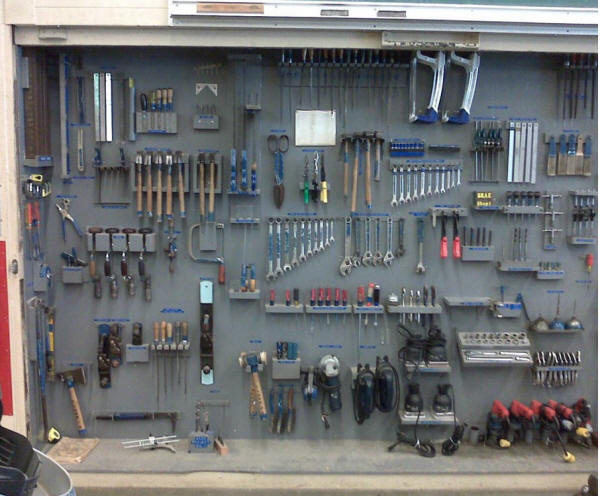
Control of tools should be a high priority
as they are necessary for daily instruction. Proper storage should allow:
There are many great systems developed by
teachers. A common method to hang tools on racks for easy access and
inventory and enclose with a lockable cover. Tool storage can be
organized by task (ex. plumbing, small engines) so access is limited when class
is not engaged in the task.
Tool rooms are useful for tools that are
used infrequently. The drawback to tool rooms is generally that they are
hard to supervise and keep organized.

A good example of custom tool holders.
These were plasma cut then bent in a brake.

Portable drill holders made from ABS pipe.
Note the storage of the cords.

Pegboard can be used to hang tools.
It is flexible. Hooks can be glued with a hot glue to prevent
falling out and tool outlines can be drawn around tools.

A nice cabinet for welding related tools.
It is lockable and notice the castor that supports the door.

An example of storing like tools together
(in this case measuring tools).

This type of tool storage is desirable
since you can see what is stored even when locked.

A lockable storage unit. Note that
this design allows for storage in the cabinet doors.

An example of “caddy” storage. Very
useful for specific projects. In this case electrical.
Caddy is stored away when not needed. Easy to inventory as every
slot should be filled. Hint: If you are using this type of
storage and have a missing tool place tape over the slot until it is replaced.

A good example of general tool storage with a vertical door. The vertical door does not take space.
Use of pegboard for storage. The advantage is that you can use purchase brackets and easly move items around. Not the use of a roll up door for security.
A small cabinet just for electical tools.
Cabinet with wood brackets and expanded steel doors.